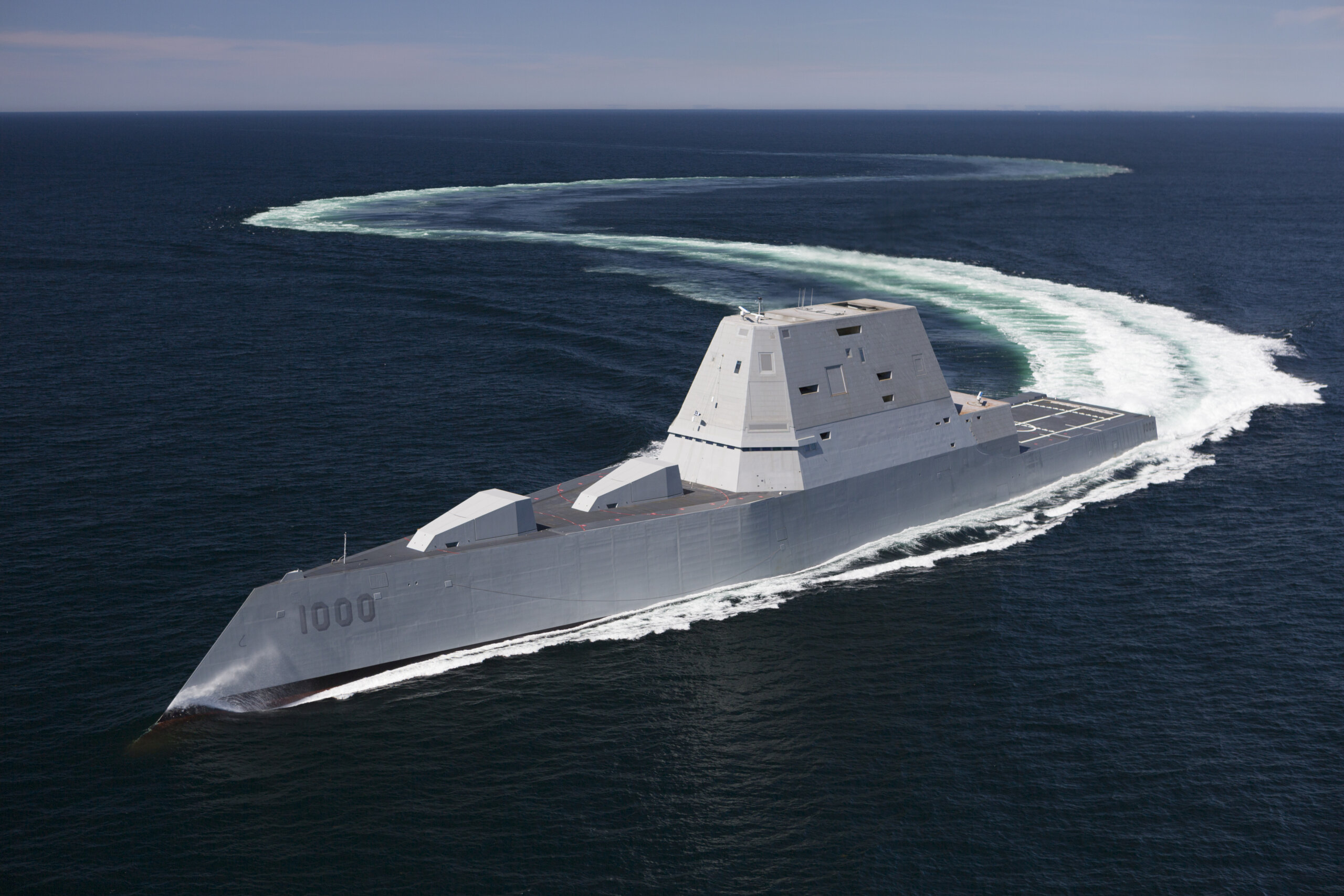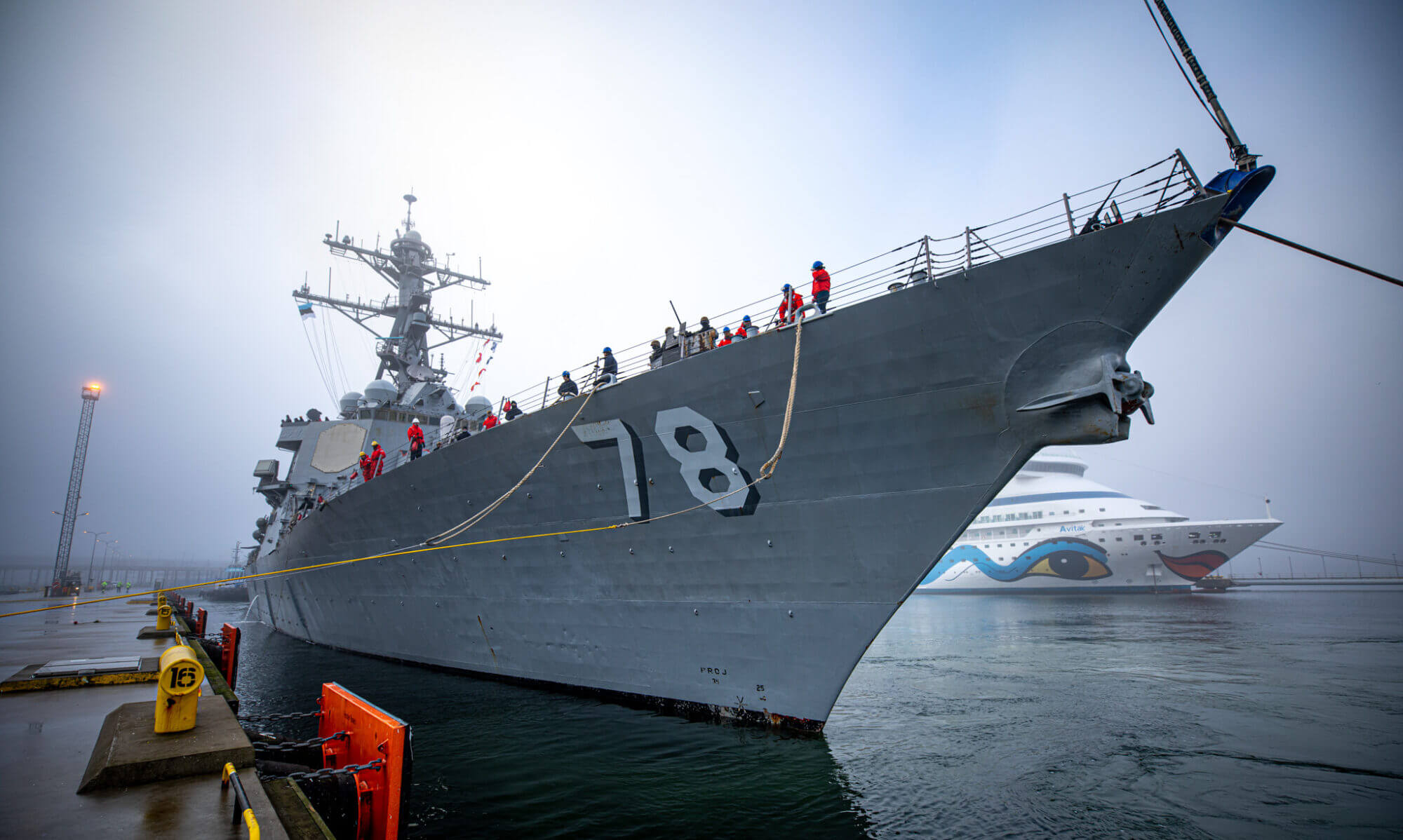
Introduction
The U.S. Navy’s strategic capabilities are receiving a significant boost, thanks to a $74 million contract awarded to HII’s Mission Technologies division. This contract is set to enhance the Mk 41 and Mk 57 vertical launching systems (VLS) onboard Navy surface ships, particularly focusing on the advanced Zumwalt-class destroyers. The improvements will bolster the Navy’s defensive capabilities, ensuring a technological edge over adversaries.
Background
The Mk 41 and Mk 57 vertical launching systems are integral components of the Navy’s surface fleet. The Mk 41 VLS, in service since the 1980s, is used on a variety of ships, including cruisers and destroyers, and supports a range of missiles such as the Tomahawk, Standard Missile, and ASROC. The Mk 57 VLS, developed specifically for the Zumwalt-class destroyers, offers improved flexibility, larger missile capability, and enhanced cooling systems.
Zumwalt-class destroyers, the Navy’s most advanced surface combatants, are designed for multi-mission operations, including land attack, anti-aircraft, and naval surface fire support. These ships feature stealth capabilities, advanced radar, and automated systems, making them a formidable addition to the Navy’s fleet. However, the Zumwalt-class program has faced challenges, including cost overruns and mission reorientation from land attack to surface warfare due to the high cost of Long Range Land Attack Projectiles (LRLAP).
Key Takeaways
- Contract Award and Scope: HII will research, analyze, and develop enhanced capabilities for the Mk 41 and Mk 57 VLS systems, ensuring these platforms can deploy a wide range of missiles from any VLS cell.
- Technological Advancements: The contract includes outfitting the Zumwalt-class destroyer (DDG 1001) with the latest Mk 57 VLS universal canister electronics unit. This development will allow for greater flexibility and readiness in missile deployment.
- Research and Development: The task order, managed by the Naval Surface Warfare Center (NSWC) Port Hueneme Division, extends to associated naval surface weapon systems, combat systems, and sensors, ensuring comprehensive improvements across the board.
- Rapid Prototyping and Engineering: HII will leverage industry capabilities to support rapid design prototyping, technological improvements, and address obsolescence issues, maintaining the fleet’s cutting-edge status.
- Strategic Locations: Most of the work under this contract will be performed in Syracuse, New York, and Arlington, Virginia, capitalizing on the expertise and resources available in these key locations.
Implications for the Navy
The enhancements to the Mk 41 and Mk 57 VLS systems are crucial for maintaining the U.S. Navy’s superiority in maritime defense. By ensuring that these systems can fire any missile from any VLS cell, the Navy can adapt more quickly to emerging threats and mission requirements. The integration of the latest electronics unit into the Zumwalt-class destroyer represents a significant leap in operational flexibility and combat readiness.
The Zumwalt-class destroyers, originally designed for land bombardment, have been reoriented to a surface warfare role, equipped to carry the latest Maritime Tomahawk missiles. This shift underscores the Navy’s adaptability and focus on countering naval threats more effectively.
Implications for America
For America, this contract signifies a continued commitment to national security and technological advancement in defense. The ability to rapidly prototype and integrate new technologies ensures that the U.S. maintains a formidable presence on the global stage. Additionally, the economic impact of this contract, with work performed in multiple states, supports local economies and sustains high-skilled jobs in the defense sector.
Conclusion
HII’s $74 million contract to enhance the U.S. Navy’s vertical launch systems marks a pivotal step in fortifying America’s naval defense capabilities. The advancements in the Mk 41 and Mk 57 systems, particularly their implementation in the state-of-the-art Zumwalt-class destroyers, underscore the Navy’s strategic foresight and dedication to maintaining technological supremacy. As these developments unfold, they promise to deliver significant advantages for warfighters, ensuring they are well-equipped to face the challenges of modern naval warfare.

